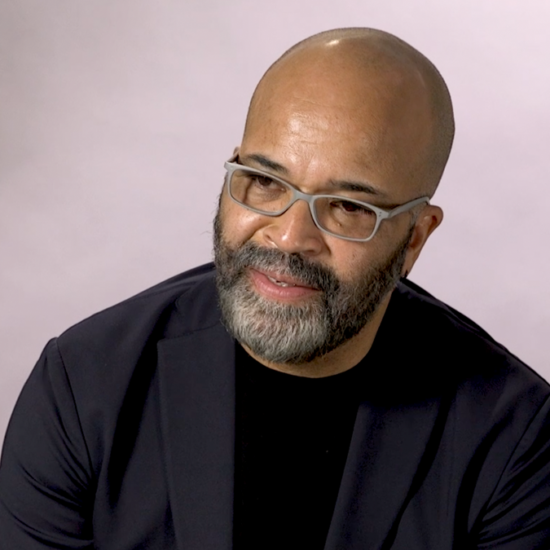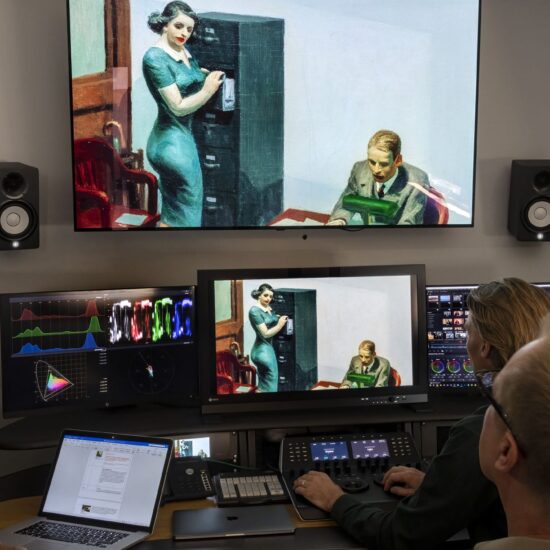
The greatest American figures cemented themselves in the fabric of history through their fearless experimentation and transgressive innovation within their craft.
However, these efforts do not always translate into commercial or critical success, sometimes even eliciting strongly negative responses. The American Masters subjects on this list each pioneered within their field through avant-garde compositions, unconventional prose or radical political critique and were met with resistance from audiences and critics alike. Their legacies prompted rediscoveries of these controversial works and garnered them newfound acclaim and often posthumous success. Here are eight American Masters subjects who were ahead of their time:
1. Oliver Sacks, “Awakenings”
Photo of Oliver Sacks, courtesy of Library of Congress, Prints & Photographs Division, photograph by Bernard Gotfryd.
Innovating in both the written word and the medical field, Oliver Sacks became one of the most fascinating figures of American literature and science for his groundbreaking scientific inquiry into neurosis, autism and psychiatric practices, as well as his translation of his research into deeply moving prose. His breakthrough novel, “Awakenings” (1973) was praised by critics and drew audiences as it took a deeper look into the lives of patients struggling with encephalitis lethargica, or “sleepy sickness,” and a miraculous treatment process that could cure the elusive disease.
Although today Sacks is hailed as the “poet laureate of contemporary medicine” by The New York Times, he received resistance from the medical community who discredited his research for his writing style, which they viewed as an “embellishment.” Nevertheless, Sacks understood the importance of communication within the field of public health and used his literary talents to humanize patients living with neurological disorders.
2. Lorraine Hansberry, “The Sign in Sidney Brustein’s Window”
Lorraine Hansberry’s groundbreaking play, “A Raisin in the Sun,” gained her newfound fame as she addressed the struggles of a Black family within a segregated Chicago neighborhood. Her following work, “The Sign in Sidney Brustein’s Window,” completed as she was struggling with pancreatic cancer, struggled at the box office, but survived due to a celebrity campaign organized by the producers and Mel Brooks.
Critics had meager opinions of the work, with a New York Times review stating that “the truth must be faced that Miss Hansberry’s play lacks cohesion.” With constant comparisons of the play to her previous hit, the play was considered a failure by the time of her death at 34. However, a renewed analysis of her work emerged due to the continued relevance of her plays’ and essays’ explorations of race, gender and class. A revival of “Sidney” in Chicago elicited praises from the Chicago Tribune: “So here comes an extraordinary play, a drama so infused with emotional intelligence, linguistic treasures and the human conditions of dread and longing that it keeps you bolt-upright in your seat for nearly three hours. It is a play penned by surely the greatest dramatic writer ever to emerge from Chicago, a genius from the South Side who would have dominated the American theater of the latter half of the 20th century.”
3. Thomas Eakins, “The Gross Clinic”
Thomas Eakins is one of the most prolific and celebrated American artists, who is renowned for his use of expressive realism within paintings. His legacy was established posthumously; during his lifetime he only sold 30 paintings and his career was considered a commercial failure.
One of the most treasured paintings in the American canon, “The Gross Clinic” depicts Dr. Samuel Gross, a professor at a Philadelphia medical school conducting a live surgery in front of a class. The painting uses slick reds and deep shadows to subtly portray the latent drama within the lecture hall. At the time, the work was not well-received by critics, with a New York Times article stating that it was “so dreadful that the public may be well excused if it turn away in horror.”
However, after Eakins’ death, “Gross Clinic” has found new favor with critics and art lovers around the world. New York Times critic Jason Farago explains the painting’s appeal, stating that “so much of the greatness of ‘The Gross Clinic’ lies here: between the fact of pain and the desire for knowledge, between the gore of surgery and the sublimity of art.”
4. Flannery O’Connor, “Wise Blood”
Flannery O’Connor brought the Southern Gothic genre to American readers through her short stories and novels, which have gained widespread acclaim and earned a place in the American literary canon. Her Catholicism and battle with lupus informed her literature’s fascination with the grotesque and issues of disability, both of which were prominent in her debut novel “Wise Blood” in 1952. The book centers around a discharged WWII soldier disillusioned with Christianity who intends to establish his own anti-religion.
The novel initially received mixed reviews, with the Kenyon Review writing that “Miss O’Connor’s skill is not yet that mature, although she makes a good run for the money.” However, later in her career and after a subsequent film adaptation, “Wise Blood” became one of the primary examples of O’Connor’s craft as a writer. Critic Lewis A. Lawson explains the power of O’Connor’s idiosyncratic voice: “[H]er world frequently is that of a dream (in keeping with her topsy-turvy aesthetic, dreams are perhaps the most lucid and conventional parts of the book), with characters who transpose themselves, with aimless action endlessly performed, with bizarre mixtures of the known and the unfamiliar.”
5. Sister Rosetta Tharpe
“The Queen of Rock ‘n’ Roll,” Sister Rosetta Tharpe broke new ground with her fusion of gospel and rock, becoming the first crossover gospel artist to appeal to large audience secular listeners with hits like “Strange Things are Happening Every Day.” Her fingerpicking guitar technique laid the foundation for artists like Elvis and radically shifted popular music into the realm of rhythm and blues.
However, Sister Rosetta Tharpe was throughout her career designated as a “race” artist within the music industry, limiting her records’ reach. In addition, her influence on rock was neither cited nor celebrated until after her retirement and she was not credited for her innovations within her genre. Today her legacy is cemented in her hometown of Philadelphia, with January 11th now celebrated as Sister Rosetta Tharpe Day and her home declared a historical landmark.
6. Janis Joplin, “Cheap Thrills”
Janis Joplin is one of the most iconic rock stars from the Woodstock era, cemented in rock ’n’ roll history for her electrifying performances, groundbreaking albums with Big Brother & the Holding Company, and for her infectious personality seen during her visits to “The Dick Cavett Show.” An unorthodox, nonconformist hippie, her identity was infused into her music, most profoundly shown in “Cheap Thrills”, her most celebrated album with hits that stand the test of time. The album was dismissed by critics, with Rolling Stone proclaiming: “What this record is not is 1) a well-produced, good rock and roll recording; 2) Janis Joplin at her highest and most intense moments; and 3) better than the Mainstream record issued last year.”
After her shocking death by overdose at 27, the music world began to embrace her body of work posthumously. “Cheap Thrills” in particular was praised for its passion and vigor, with critic Jack Shadoian writing that “it was music that swept you away. Its crude confidence was somehow part of its unwritten aesthetic. It gave a sense of something religious going on.”
7. F. Scott Fitzgerald, “Tender is the Night”

Photo of F. Scott Fitzgerald, courtesy of Library of Congress, Prints & Photographs Division, Carl Van Vechten Collection.
One of the most recognizable American literary figures of the 20th century, F. Scott Fitzgerald captured audiences with his description of a generation of flappers, hedonists, and tycoons in his riveting novels. His most celebrated novel, “The Great Gatsby,” was initially a commercial failure and overlooked by critics, which began a period of decline for Fitzgerald exacerbated by his divorce from his first wife.
His final published novel in 1934, “Tender is the Night,” stirred little interest and he received brutal feedback from his famous peer, Ernest Hemingway. In a letter to Fitzgerald, Hemingway writes: “You had good stuff in too that it didn’t need. That’s what dries a writer up…not listening… You see well enough. But you stop listening.” Despite Hemingway’s brutal criticism, the novel with a somber candor reflected upon the deterioration of his marriage to his first wife, aptly portraying the agony embedded in the quotidian as well as analyzing the nature of excess in relation to our search for meaning. Today, “Tender” has regained a place on the shelf of critics and readers alike as a turbulent and intimate reflection on the waning Jazz Age.
8. Miles Davis, “Agharta”
A cornerstone of American jazz, Miles Davis dazzled the world with the agile passion of his trumpet playing and his bold compositions, especially those within the “Cool Jazz” movement that he founded. As his career progressed, Davis struggled with addiction and the relentless pace of touring and performing, which compelled significant changes within his artistic trajectory, resulting in more experimental works later in his career, most notably the 1975 live album “Agharta.”
“Agharta” was the first of many fusion jazz albums Davis would devise which incorporated electronic synthesizers and sounds, and one of the most daring attempts to bridge jazz and the technological era. Widely panned by critics and divisive to jazz fans, with one critic lamenting that the album “suffers from a monotony of sound caused mainly by the perpetual ‘freaking-out’ of the lead guitarists,” Davis’ album was a radical departure from his previous work and boldly explored uncharted territories with a rigor unlike any other. Critic Gary Giddins confirms the album’s pioneering innovation in jazz and fusion, writing that “the themes are dramatic and the tension unremitting; and there really is not a moment when the music fails to reflect the ministrations of the sorcerer himself.”






















